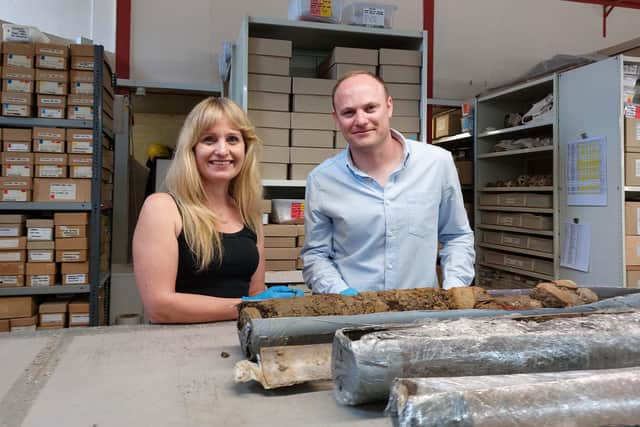Archaeologists working on Sheffield Castle site reveal the substantial earthworks it sat on
The findings from a borehole survey last summer on Castlegate will feature on BBC Two’s Digging for Britain on Sunday January 15.
The castle – where Mary, Queen of Scots was held prisoner for 14 years – was razed in the 1640s after falling to the Parlimentarians in the English Civil War. Since then it has been covered by multiple developments, most recently the cattle market, which was demolished in 2015. Sheffield Council wants to redevelop the area.
Advertisement
Hide AdAdvertisement
Hide AdThe castle was built on a bedrock promontory where the River Sheaf meets the River Don. A team of geoarchaeologists from Wessex Archaeology have been analysing core samples to work out what the landscape would have been like centuries ago.


They’ve found out more about the location of the moat to the north east, where it exploited a former channel of the River Sheaf.
The analysis has also revealed in places the motte – the artificial earthwork mound the castle sat on - was around 50 metres in diameter.
Digging for Britain presenter Dr Cat Jarman, who visited Wessex Archaeology’s labs to find out more, said: “This is such an exciting example of how science can reveal the nature of a site that is otherwise completely lost to us.”
